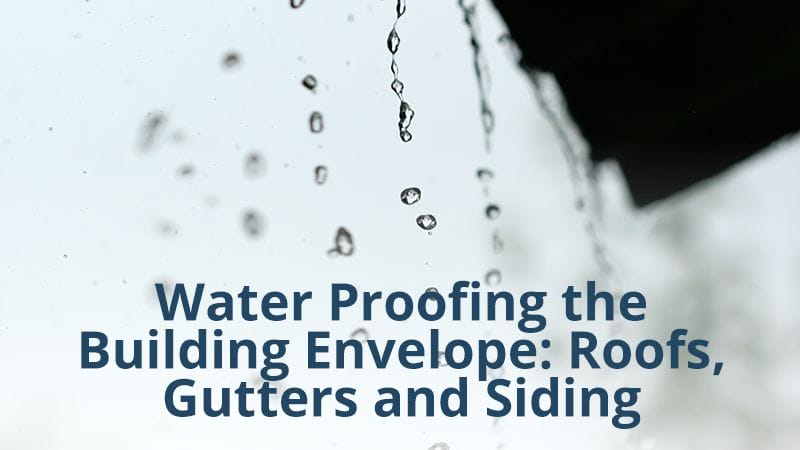Living comfortably in a rigid building comes with some serious cost. However, houses avert the forces of nature and prevent wind, water and pests from sharing your living space, which is well worth the expense. Failure to adequately waterproof the building envelope, however, renders your home (or business) little more than a large, pricey tent. Waterproofing encompasses three main components: roof, gutters and siding.
Roofs
Roofs serve as the most important element of your home in terms of keeping water off your head. Since rain, and the occasional snow, fall vertically, it will always penetrate a structure with an insufficient roof. The composition of a water-tight roof includes many parts and several layers. Underlayment, whether tar paper (base felt), synthetic felt or a self-sticking moisture barrier work together with flashing metal and some caulking to divert water off the roof. The top layer, shingles, metal, tile, etc., serve to protect the waterproofing elements from the sun’s UV rays, wind and falling debris.
Gutters
Once the precipitation flows off the roof, it needs somewhere to go besides your windows and foundation. Gutters provide the means to run water out and away from the house. Without a channeling mechanism, the runoff will drain from the eaves mere inches from your foundation and perhaps directly into any windows. As water soaks the surrounding ground, it can stress the foundation and work its way into cracks to flood your basement or crawl space or undermine the concrete slab. Small cracks can open into fissures, and the soil around the home can become eroded, further compounding the problem.

Siding
While the roof and gutters protect against downward falling precipitation, your siding shields your home from the windblown rain and snow. Like your roof shingles, siding protects the waterproofing system behind it. However, the siding material does provide a significant initial barrier to water and wind penetration in its own right. Properly installed, siding takes the brunt of the storm. Existing immediately behind the siding and before the house wrap or tar paper is a narrow space. This thin gap allows for the small amount of water that can blow in through joints and where the wall meets the eave to flow to the ground and dry. When siding fails, water can encroach through the walls and soak your drywall and carpets.
With Atlanta’s normal annual precipitation at about 50 inches, any weakness in your home’s building envelope will be quickly noticed. But waiting until a crisis occurs can put your investment at substantial risk. Rather, you should perform regular checks and maintenance on your roof, gutters and siding so you can catch any developing problems before they become a nightmare.
If climbing a ladder sets your teeth on edge, or if you possess too little experience to know what to look for, we welcome you to give Rosie’s Roofing and Restoration, a reliable roofing company in Atlanta a call. With over 30 years of experience, we know how to inspect and diagnose all the parts that waterproof your home, including windows. Please contact us to schedule your appointment today.




